In our first Committee Meeting of 2025, we the committeee members agreed both a lean budget for 2025, and our priorities for the Garden this year (monies allowing). This year’s lean budget not only reflects the rapid changes made to the Garden over recent years (see 2023 Outgoing Committee Recap and News section for more), but also the ongoing constraint of operating such a large Garden in central London (1.6) acres, with so few ratepayers (116).
By reducing the amount of changes/improvements, we nevertheless have an opportunity to push our already-strong focus on Ecology to the forefront of the Garden’s management in 2025. We will continue to try and deliver all projects for the best possible price, and ensure where we do make structural change, there is a clear business case both in terms of improving ratepayers benefit/use/utility of the Garden, and reducing our ongoing maintenance costs.
The Committee would like to thank ratepayers for their ongoing support in these endeavours.
Yours Sincerely,
The Gloucester Square Garden Committee
Jump to a specific section:
January - Hedging / Screening
Colin, in conjunction with Jasmein, took time in 2024 to plan for new hedging in 2025, addressing long-standing resident concerns around privacy/screening, not least near the play area where some street-side ASB has been witnessed/reported in 2024. Some 500 new bare-root hedging plants, including hawthorn, hornbeam, and blackthorn have been planted along the railings January.
These native species will be far more beneficial to the ecology of the garden, offering support to birds and insects than non-native evergreen hedging seen at many squares (and historically in our square), this in turn will allow us to reduce the human-led wildlife encouragement measures (most of all our 5+ bird feeders) over time. The majority of new hedging is thorned, which should reduce the amount of railing-hopping incidents, or at least confine them to CCTV-monitored locations. The trade-off is that the hedging will only be green and thick for approximately 8 months a year (from spring). In the winter months the leaves will brown, though be largely retained by the hedge until fully withered. The Committee were happy with this approach, noting the Screening is most usually a concern during the middle of the year, and the seasonal change is nothing to shy away from.
Due to the length of screening required (some 150m), we could not afford established plants, though the bareroot varieties acquired are already 1m+ tall when planted, and should grow 40-60cm a year.
Many of our residents will remember the substantial hedging/screening the Garden enjoyed prior to the railings replacement works (seen in the above 2018 Google Streetview image). Unfortunately whilst the new railings have vastly improved the square, much of the hedging was removed (we suspect as it sat far too close to the border) during works, and not adequately replaced. Worse still, the ground behind the railings was littered with hazards and disused concrete footings, that needed to be addressed before a new hedgerow could be planted (and was in Spring 2024).
Thought has been given to the ongoing maintenance of the railings (a subject close to the Secretary’s heart), with all hedging planted a fair distance away from the railings to allow for future redecoration.
February - Soil Enrinchment
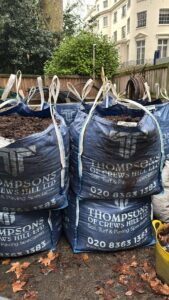
Like many Garden Squares in Central London, we are fighting an ongoing battle to maintain soil nutrition. The trees, particularly our 14 giant plane trees, extract nutrients from the ground, use them to develop a lush canopy of leaves, that then falls to the ground in October/November, only to be taken away from site and disposed-of (with ratepayers ultimately picking up the cost of that disposal).
Our September section addresses the steps we are taking to lessen the annual nutrient loss (in short: plane tree leaves need shredding if they are to be mulched) though in February we are focussed on addressing the current, nutrient-deprived, state of our soil.
Our brilliant head gardener Jan (Gravitas Gardens) has ordered 12 grab-bags of spent mushroom compost, and is helping formulate a plan on where the Caretaking team should spread it.
March - Wildflower Rings Around the 5 Central Planes
After a fairly poor attempt in 2024 (met with some disapproving comments by one or two residents), this year we will be making a concerted effort to install successful wildflower-meadow-rings around the base of the 5 plane trees in the centre of the Garden, that should remain colourful throughout the summer.
The process will involve stripping the lawn back 2.5-3m away from the tree (in a circle), lightly scattering a seaweed feriliser, planting c.1,000 meadow plug plants, scattering a meadow seed mix, then covering with spent mushroom compost.
Why put rings around the trees? In short, to discourage people from sitting at the base of the tree and to protect the trees health.
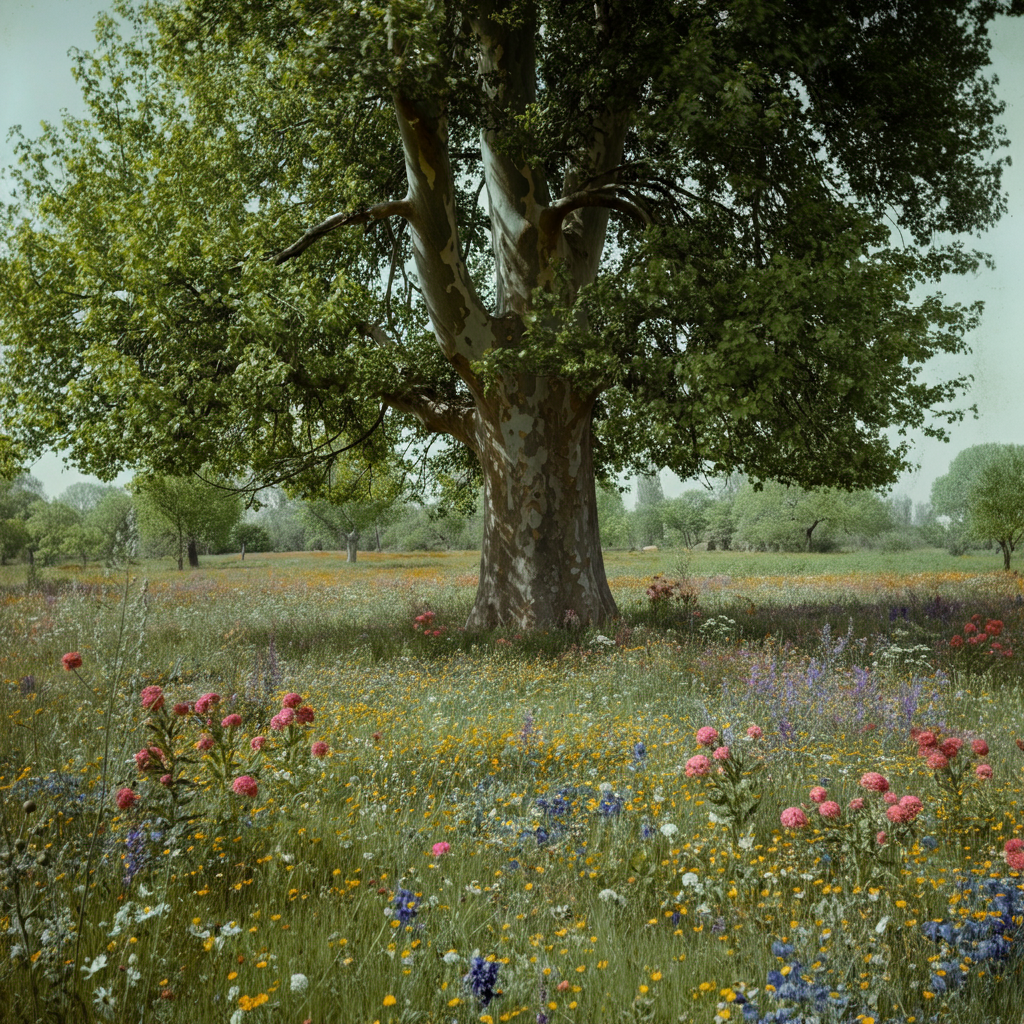
As part of managing a population of aging Plane Trees in an increasingly warm climate (see our Tree section on this website for more info), the Garden Committee continue to take advice from experts on preserving the health of the Plane Trees and minimising the risk of (inherently unpredictable) Sudden Branch Drop.
The principal key to reducing the risk of further damaging the Plane Trees is to remove ongoing human activity and competing sources of nutrients from around the tree.
A regularly maintained lawn is seen as a poor option to surround the tree. The constant mowing not only deplenishes nutrients, but also leads blade-strikes to exposed tree roots and the albeit limited chance of fuel contaminating the soil. Grass up the base of the tree also encourages humans to congregate in the area where the (albeit still limited) risk of Sudden Branch Drop is greatest, and further increases the chance of soil contamination (spilled drinks / etc) or direct damage to the tree (e.g. children attacking with sticks / cricket bats).
The preferred option by Tree Consultants is to install mulch rings around the base of the tree, i.e. brown circles filled with bark mulch. However this has been quite unsuccessful in other Gardens in terms of resident response, and given the negative response to last year’s wild rings, the Committee do not believe mulch-rings will be tolerated by Gloucester Square residents in the long-run, and the risk of wasted investment is too high.
April - Irrigation Commissioning, Spring Planting, Bird Baths & Signage
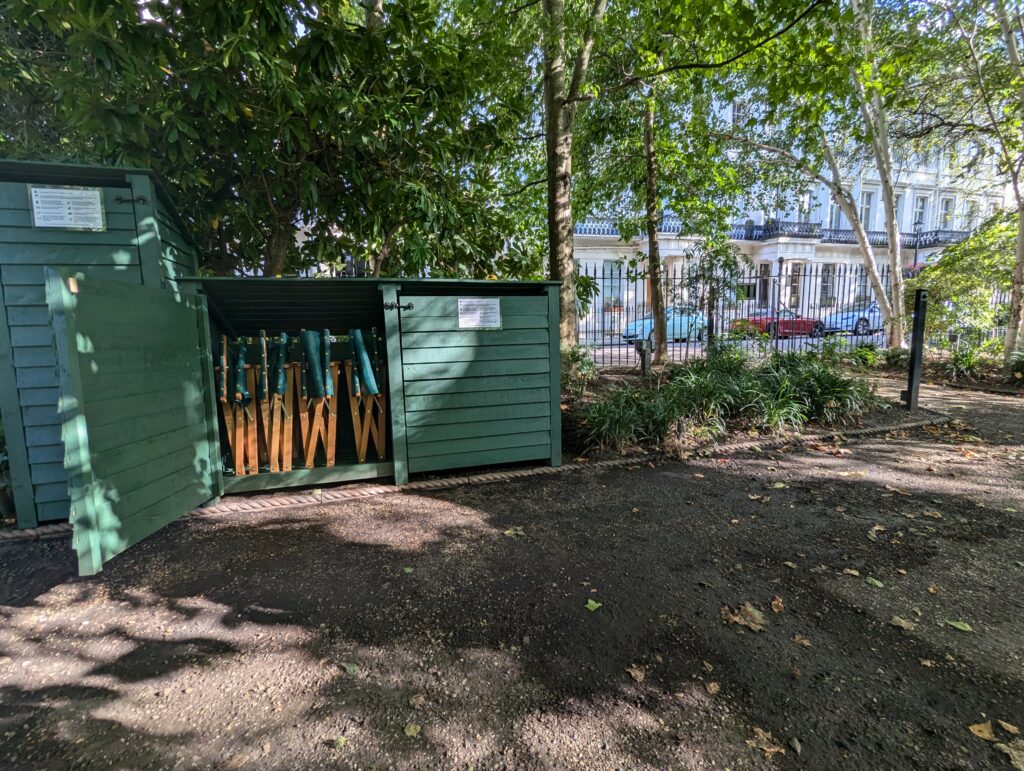
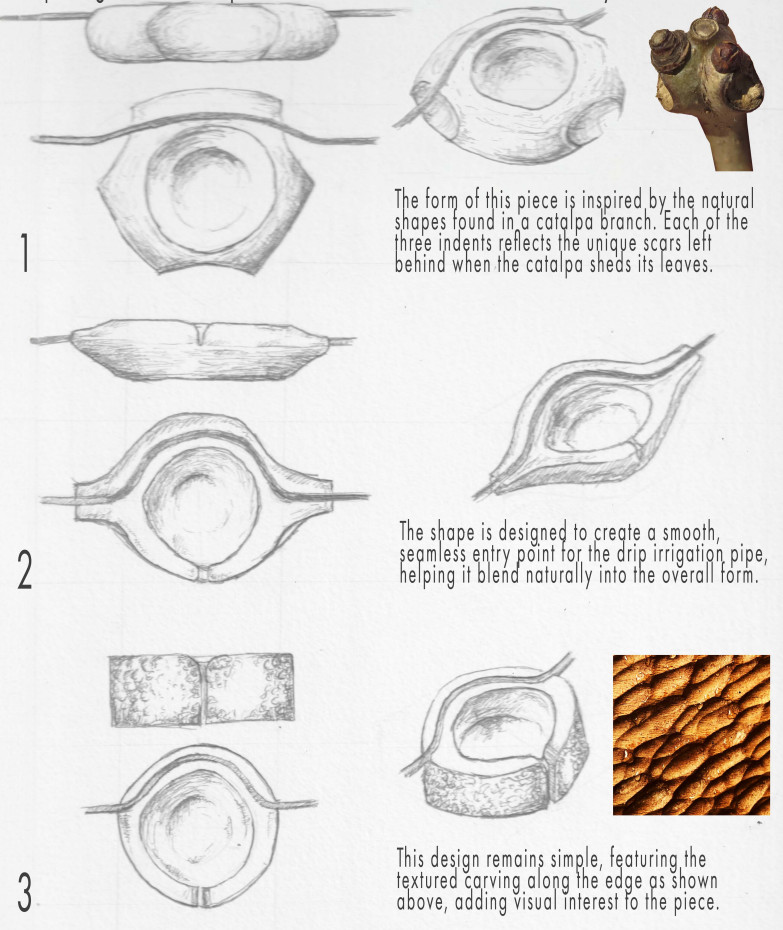
With the end of the season we will be looking to commission our Irrigation System, which entails starting each of the garden’s 21 circuits and seeing what repairs are required to the pop-up sprayers and drip pipes.
Once the irrigation system is up and running we will be planting a selection of annuals and perrenials to fill gaps in the flower beds (with the planning / ordering process taking place in March). The central bed is a particular focus at the moment, with the Heucheras falling foul of vine weevils, and the replacement plants failing to make a visual impact.
We have a limited signage budget for 2025, some of which will go towards printing an A2 rules poster for the flexible seating storage, making clear the terms of use – all with a consistent appearance to the other notices in the Garden. We have an A2 poster frame leftover in the shed that will be reused to house the notice poster.
Finally, as part of our ecology drive, we will be installing further bird baths around the garden made out of cross sections of the felled calpa tree, and repleneshed daily by the drip pipe system (which is an important part of maintaining water quality for the health of the birds). Gentle sloping designs have been requested to also support butteflys, which is another focus of our ecology agenda (to be published during the year).
May - Final Cutout and Other Tidying
The Garden historically had 3 dirt cutouts between the perimeter path and the lawn. The entry to these cutouts was defined by a curvature in the tarmac paths and toe-rope edging, though the dirt paths themselves were always dreary, too narrow/shady to grow grass successfully, and reducing light to the surrounding beds.
In 2022 the Committee widened the 2 cutouts on the North side of the Garden withhin the allowance of the surrounding trees/shrubs, and installed gravel ontop of a Garden Grid. These changes have been seen as hugely successful, not only leading to richer beds either side of the cutout and removal of a muddy unappealing path, but also allowing for permanent locations for table seating that has enhanced occupiers use of the garden.
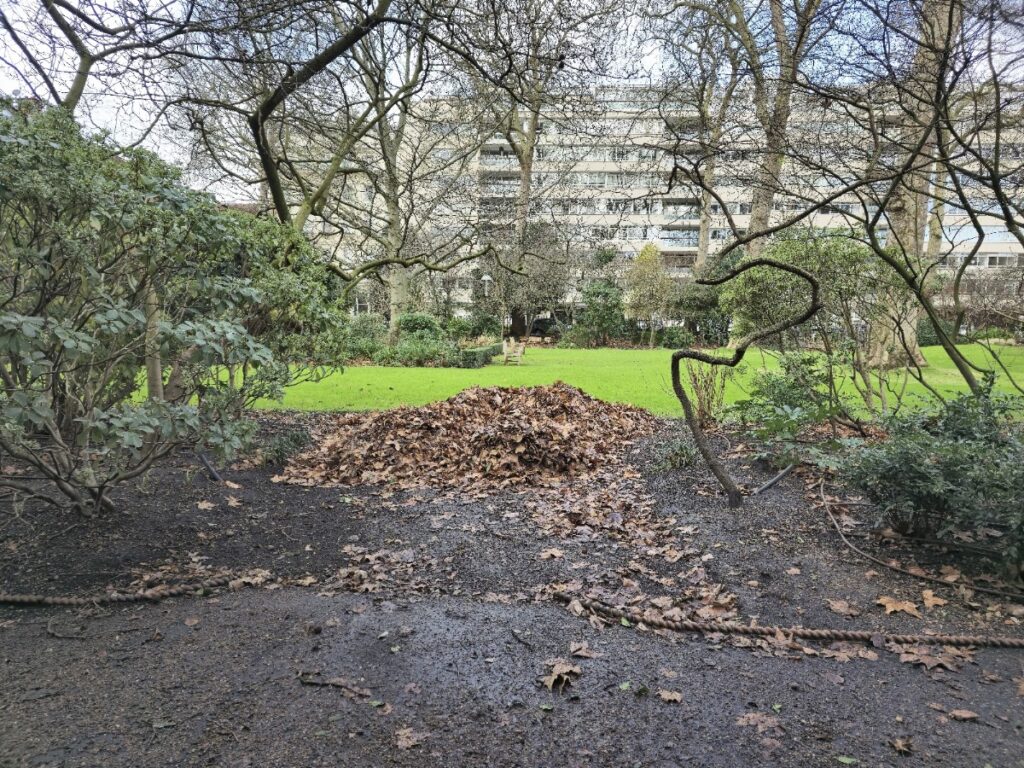
The remaining Cutout, on the South-West side of the lawn, has remained as a dirt path. In 2024 we resolved a slow-leak in the irrigation pipe-joins in this area, and used the opportunity to run a new electrical conduit under the area. This year we intend to formalise the area with a gravel grid from the path to the lawn, finishing flush with the base-path height. Unlike previous cutouts, following Jasmeins professional-advice this cutout will have a narrower entrance following the cuvature of the path-edging, allowing for more interesting flower beds and further screening from the street.
Whilst the overall feedback about the table seating installed in the Garden has been overwhelmingly positive, the Committee are satisfied there is no need for further table seating at present. Instead we will likely use this area for one or two chess tables, between two flattened sections of Catalpa logs (that proved popular seating features during the Open Day). James Macintyre-George, part of our retained Tree Surgeon team, has agreed to modify and reuse large sections of Catalpa Trunk to make an interesting feature here.
June - Open Days
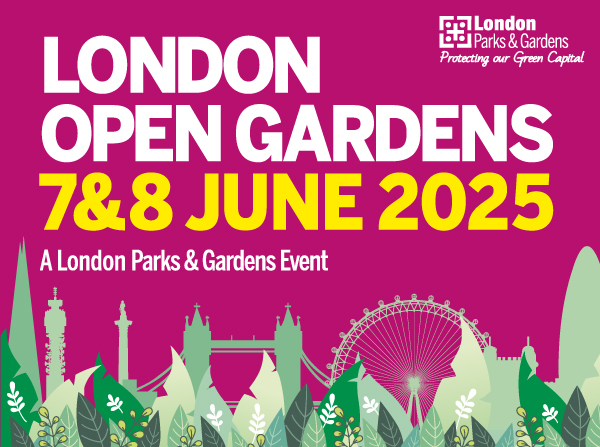
In 2024 we joined the London Open Gardens Event for the first time in over a decade. Our Garden was one of the more popular Gardens among the 100+ participating, with 300 visitors touring Gloucester Square.
In 2025 we will be continuing our participation in the London Open Gardens event, this time on Sunday June 8th between 10am – 5pm. In addition, the Hyde Park Estate Management Team are opening the Estate Gardens through the (separate) National Garden Schemes on Saturday June 7th. We participated in this event in 2023, and are happy to continue supporting the Estate Owners event by participating again in 2025. This means Gloucester Square will be open to tours on both the days of the weekend.
A note on unapproved events and unaccompanied use of the garden by non-occupiers (i.e. not ratepayers or their assured tenants):
Unfortunately last year the Open Gardens weekend was detracted-from by both an unapproved resident event on the preparation day, and an unapproved non-resident event on the afternoon of the Open Garden Day itself (where the event hosts claimed to be family members of a resident who would be attending imminently, a manifest falsehood).
Whilst the committee have issued fines in both cases, and a final warning to the keyholder responsible for the latter event, we want to be clear that any unapproved events attempted in the days prior-to or during the Open Garden weekend will be immediately shutdown, and run a high risk of ratepayer suspensions / fines. Per the Rules and Events sections of this website (also signposted in the garden) any gathering of 15 or more people (18 months old or older) is considered an event and requires the advanced permission of the Committee.
Residents are also reminded that use of the garden is strictly for Occupiers (a defined term under the Estate Management Scheme / Leases, broadly meaning the ratepayer or their assured Tenant) and their accompanied guests. Facilitating the unaccompanied use of the Garden by non-occupiers (with no contractual right to use, nor paying for, the garden) is not only a breach of contract, but could fall foul of Section 11 of the Fraud Act (2006): Obtaining Services Dishonestly.
July - Path Clearing (?) or Sunbathing
In 2024 we successfully stripped back mix of gravel and muck, revealing the original path on the Southern side of the square, which has made for a much neater and less-muddy surface over winter.
This work is an ongoing (as and when resources allow) project expected to last multiple years.
If budgets allow in July (having taken a view of collections and donations) we will look to stip the Western side of the North Path (from outside no.7 to the garden gate). As the following photo shows, not only are the several inches of mud/gravel in this area hiding the tow rope edging (exposed for the photo), it is also causing weeds and self-seeded grasses to grow (the irony being the gardeners are wasting time weeding the path, even though the surface under all this muck is weed proof).
If budgets do not allow, the Secretary and other committee volunteers will be allowed to take a well earned break whilst the weather is nicest.
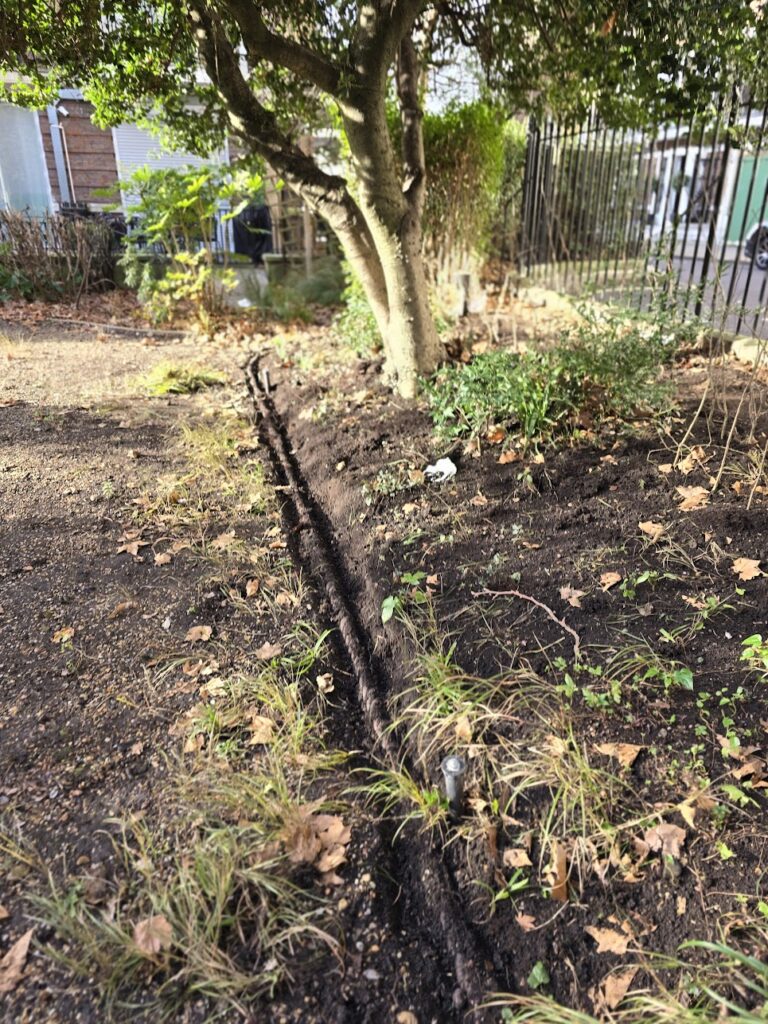
August - Nutrient Recylcing Facilities
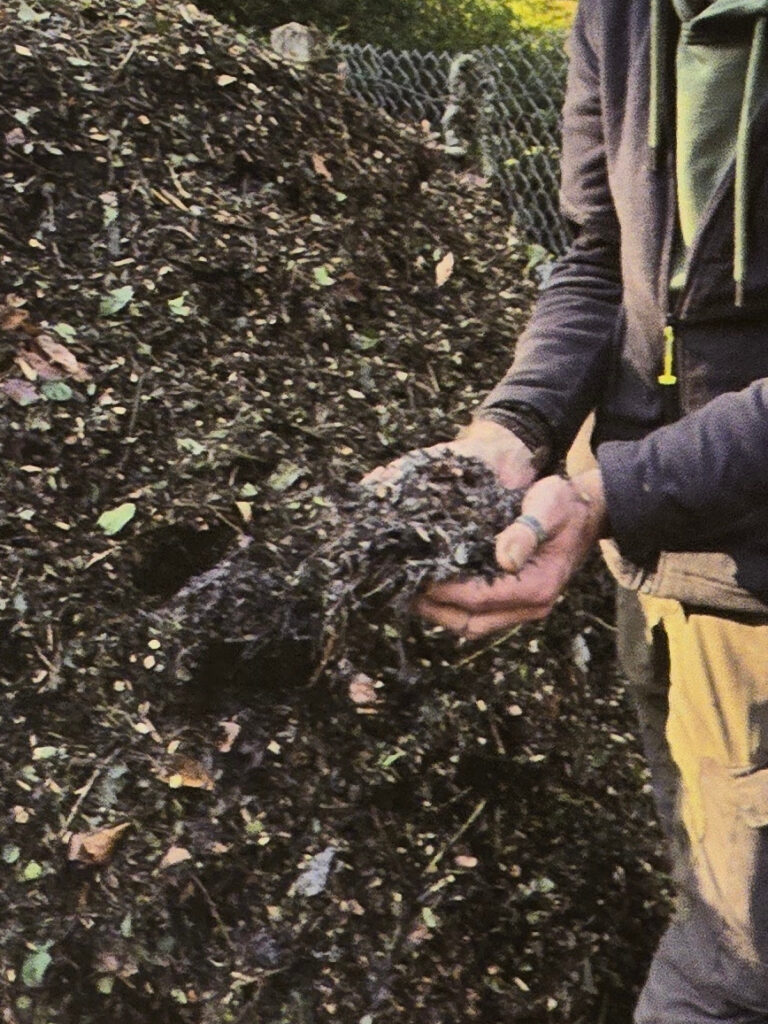
Ladbroke Square Leaf Mulch – © Garden Square News, Fall 2024
Those who read the latest issue of Garden Square News may well have seen an article on the Leaf Mulch Pile maintained by Ladbroke Square with commentary from their highly regarded Head Gardener – Nevil Capil (formerly head Gardener for the equally exceptional Eccleston Square).
As Nevil eludes-to in the article – a lot of squares get leaf-mulching wrong, especially with regards to the primary source of leaves – Plane Trees. These leaves are large, thick and resistent to decomposing. Piling them up as they fall simply creates a pile of leaves that fail to decompose, and attract insects/vermin.
The solution is to blend the leaves before attempting to mulch them. This not only significantly reduces the volume of leaves (up to 10-to-1 reduction), it also greatly speeds up the decomposition of the Plane Tree leaves, and reduces the propensity for vemin to nest in the pile.
If done correctly, mulching a significant proportion of the gardens leaves would provide us with c.3,000 litres of leaf mulch ready for each spring. That would go a long way to arresting the annual decline in soil nutrients that we are currently experiencing, and allow us to reduce and eventually perhaps even eliminating the cost of buying-in the make-up nutrients.
Locations for (non-permanent) Leaf Mulching bins around the Garden are currently being reviewed, as is the ability to purchase an electric leaf mulching machine capable of handling the volume of Plane Tree Leaves we experience.
September/October - Bulb Planting & Targetted Leaf Collection
As we move into the fall the focus of the Gardeners and Caretakers will be planting for the following spring, this will mainly be focused on bulbs around the trees and in the central bed. We will not be removing and storring bulbs between seasons as it is not economically sensible given the labour costs. Instead bulbs will be replaced on a bed-by-bed basis where they thin out over time.
To free up Gardener and Garden Caretaker time, we will be continuing the successful policy of reducing leafblowing during the winter, especially during good weather, where we focus energies on horticulture rather than maintaining a neurotically-tidy space.
Leaves are only collected from the lawn (where they might cause browning), and (albeit less frequently) from the path. Leaves falling in the flowerbeds are left in position for less frequent bulk collections.
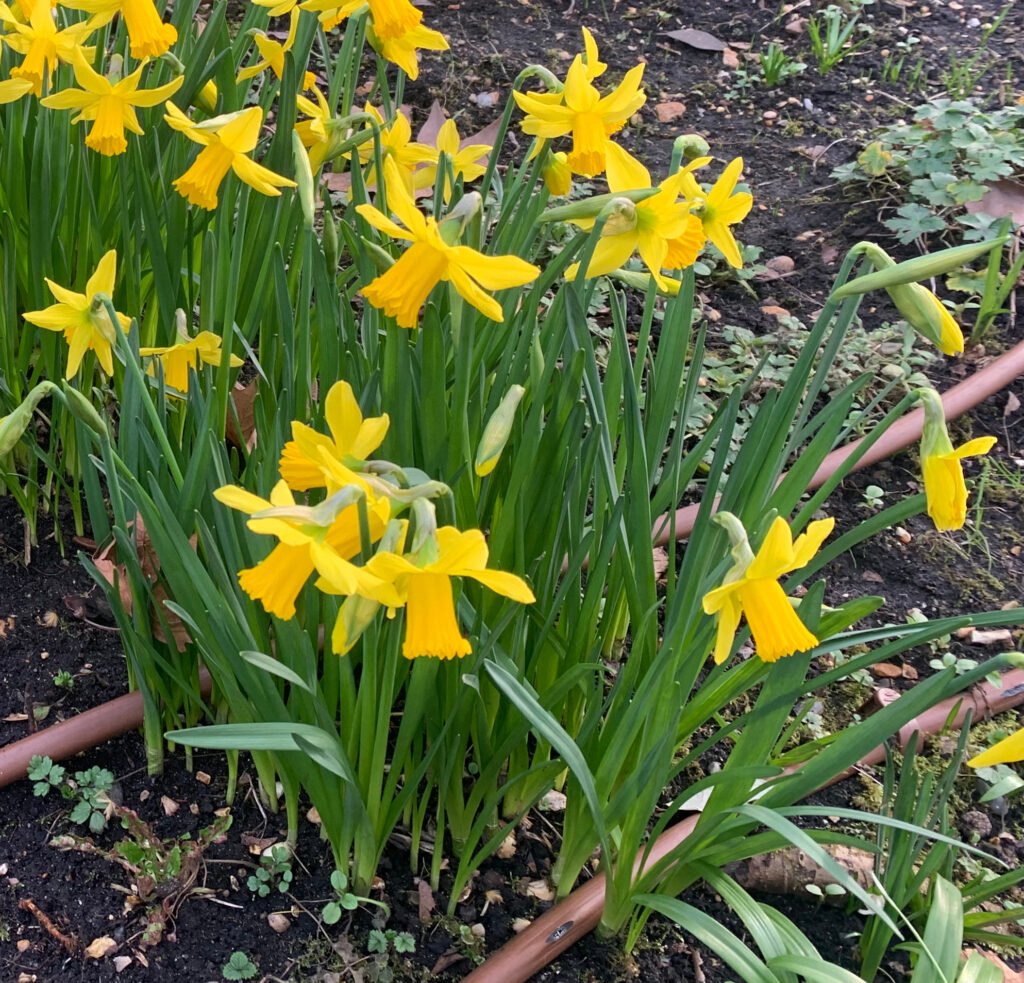
November/December - Festive Lights
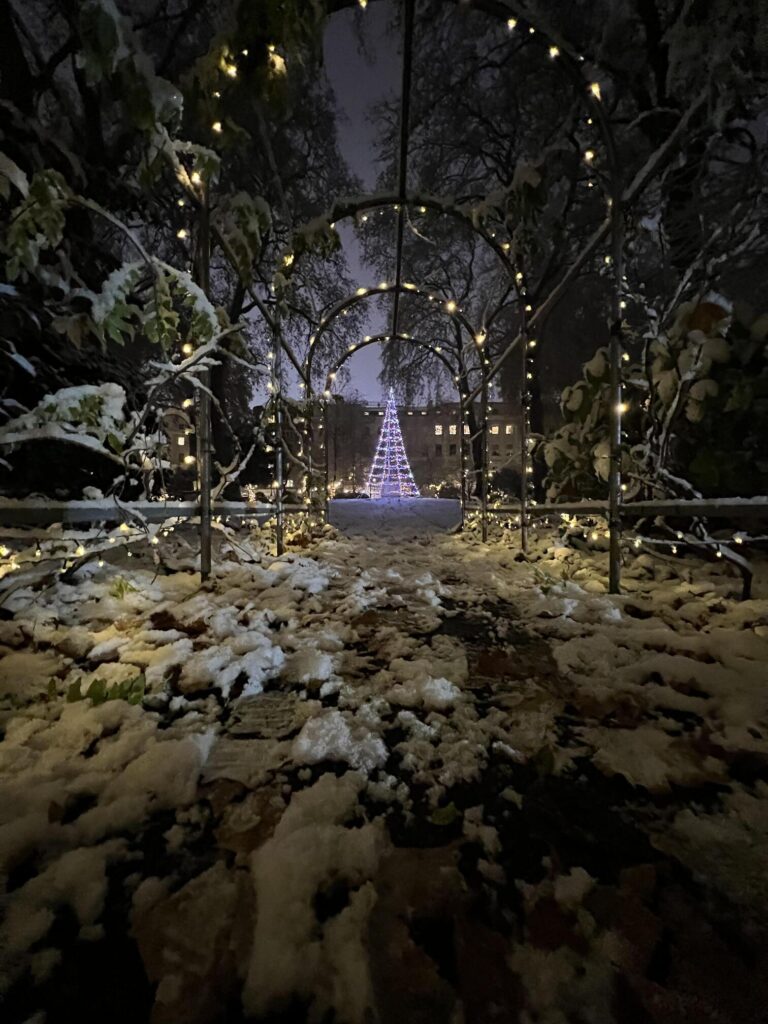
In November we will be focusising efforts on preparing the Garden for our seasonal Festive Light display.

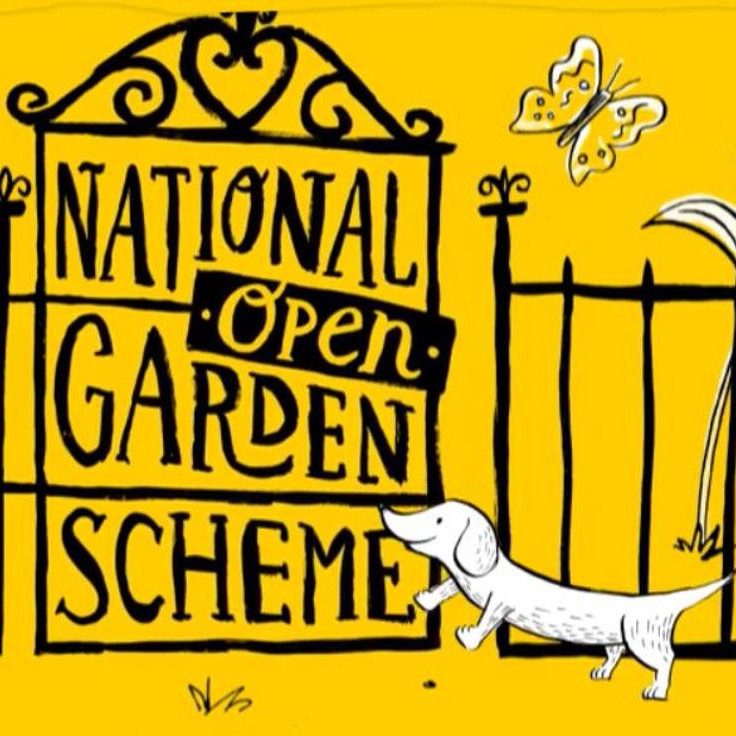
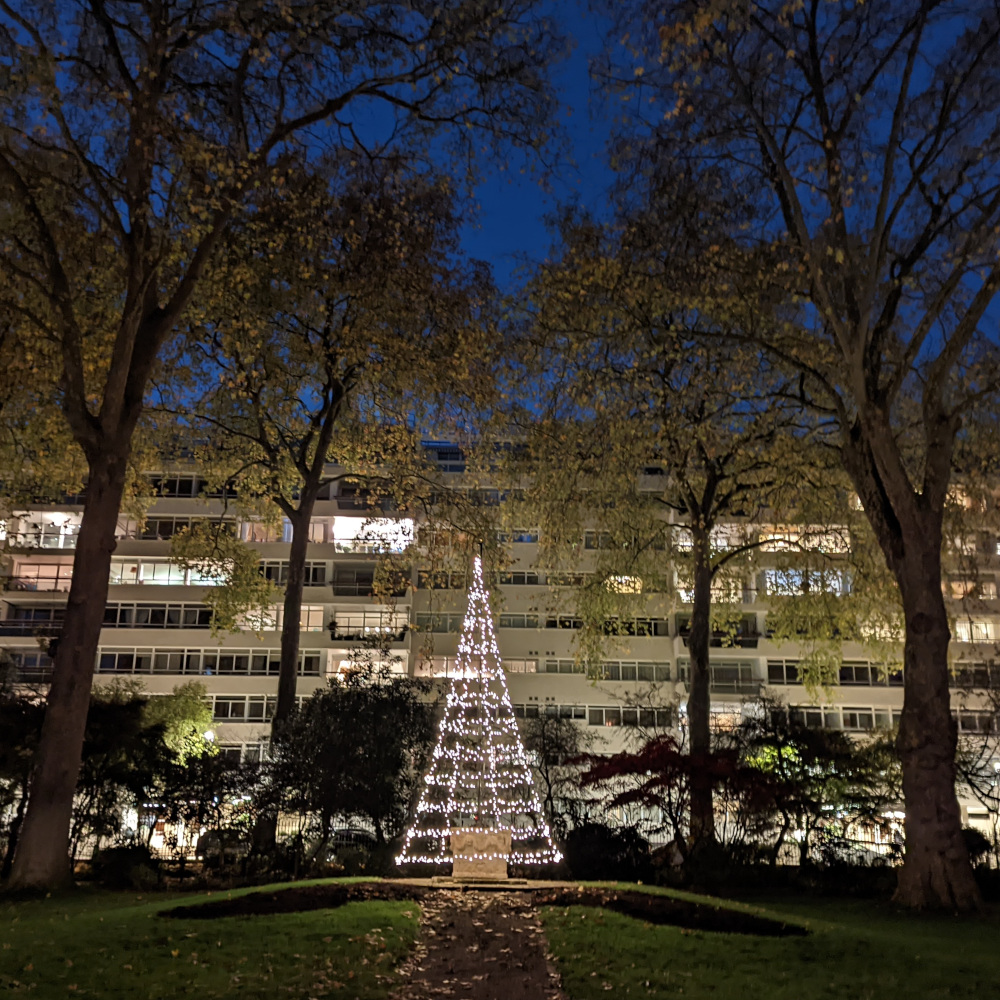
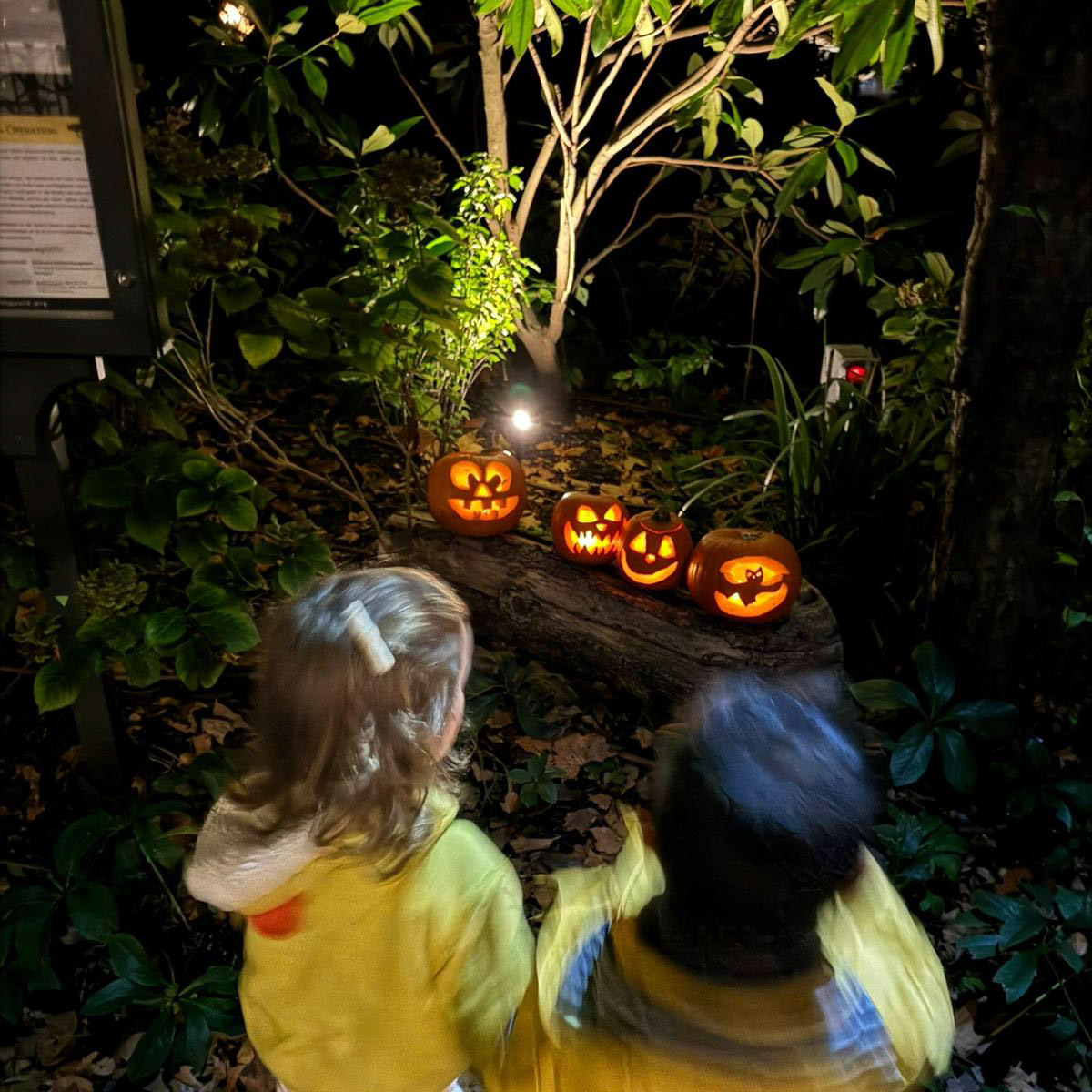
When can we expect the trip hazard and unsightly safety barrier at the North East corner to be dealt with? It has been like that for a year with seemingly little interest in taking care of it.
Good afternoon Neville, the Green Pedestrian Barriers were put in place at the eastmost and southmost corners of the perimeter path towards the end of last summer once the path uncovering works for the year were complete. In both locations the barriers sit above historic drains that are much lower than the uncleared gravel+muck the other side of the barrirer. The Committee were concerned both the drain, and the slope from the uncleared gravel down to the original path would represent a trip hazard.
We will review with the caretaking team how to reduce both the hazard and the size of any barrier/signage in the coming month. It should be noted the path clearing effort is not straightforward, as it relies on storing the removed spoil in the compound until it can be collected and removed from site (21+ tonnes collected last year). This process can’t take place when there are competing garden priorities (such as the removal of leaves (fall-spring) / trichromes (late-spring), or the delivery and distribution of mulch (Q1). Works are timed accordingly, and the pause in works is certainly not down to a lack of care / interest.